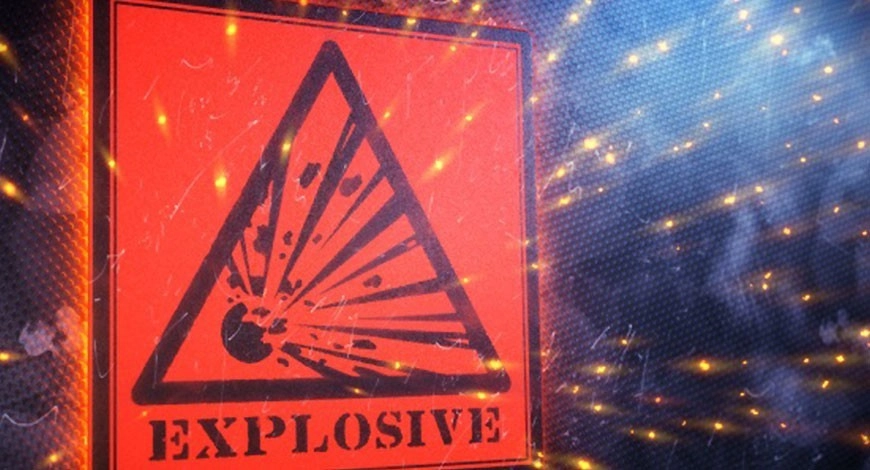
Combustible Metals: The NFPA Revises Standard 484
When it comes to fire prevention, the U.S. National Fire Protection Association lays down the law… or at least the recommendations that it publishes tend to make their way into the industrial standards.
This year, the NFPA tackled combustible metals by revising its Standard 484. The 158 pages of that document contain some good advice. Our favourite: always trust a dust collection expert to confirm the safety of your facilities!
So we decided to put that recommendation into practice starting now by giving you the details of the new aspects in this edition.
Dust Collection In The Spotlight
In this new edition of Standard 484, the NFPA is sending a very clear message: when combustible metals are at issue, particulate management must definitely not be left to chance. If the industrial sector learned one thing from the Hoeganaes Corporation fiasco in 2011, it’s that a dust cloud is never a good sign.
Therefore, chapter 11 on dust collection underwent a major rewrite and enhancement.
Here are the most significant changes.
- The NFPA now officially recommends that an expert be responsible for designing and installing all equipment for managing combustible particulate solids. Unlike distributors, a specialist can assess all the facilities and provide integrated solutions geared to the situation. (NFPA 484: 11.2.3.2)
- A great deal of importance is placed on equipment ground, suggesting that the standards will become even stricter. To prevent electrostatic discharges, it is recommended that the system be inspected and documented annually to confirm that there is no break in the grounding measures. (NFPA 484: 11.2.4.2.2.3)
- In addition to the minimum and maximum values rating the explosiveness of metals, the data plate on the dust collector will have to specify the type of filtering media used. The NFPA 484 thereby aims to eliminate maintenance errors associated with staff turnover and knowledge transfer. (NFPA 484: 11.2.3.7.1 (4))
- Although control booths and downdraft tables not connected to a centralized system were officially prohibited in the 2015 edition of the standard, the 2019 version shows some openness. If less than 0.5 lbs of particulates measuring less than 500 microns have built up, and if the drawer is emptied every day, this equipment is permitted. In other words, light finishing work can be done on a self-contained downdraft table. (NFPA 484: 11.2.4.4.4.3)
- More good news: NFPA Standard 484 is showing some flexibility regarding energy-efficiency measures in the presence of combustible metals. Recirculating the exhaust air from a dry dust collector is now acceptable, as long roughly 10 conditions are met. These include installing a device that reports any malfunction that can compromise air quality and checking that the exhaust stream is healthy, in other words that it contains between 19.5% and 23.5% oxygen by volume. (NFPA 484: 11.2.4.4.13.1)
The Ultimate Protection: Prevention
As mentioned in the introduction, one of the major new aspects the NFPA Standard 484 is the emphasis on collaboration with dust collection specialists. An entire chapter is devoted to that: chapter 7, which covers hazard analysis.
According to the NFPA, industries using combustible metals should call upon a qualified person to assess the fire, deflagration and explosion risks. In addition to the recommendations in chapter 11 regarding the design and installation of dust collectors, NFPA 484 suggests that an external advisor inspect the premises and document his/her analysis every five years.
We believe that it was high time for experts to start appearing in the standards! AIREX automatically conducts this type of assessment in its projects. However, the dangerousness of dusts is only one component of our integrated inspection. We also consider all the other risks in order to choose effective solutions from an energy-consumption and cost-saving perspective.
Looking To The Future
Although the standards sometimes lag behind changes in manufacturing practices and technology, that is no longer the case with NFPA Standard 484! By adding chapters 12 and 13, the NFPA is providing an initial framework for nanometals and 3D printing using combustible metals.
After an in-depth reading, we got the impression that chapter 12 was added to NFPA Standard 484 mainly to point out that nanometals could potentially be coming to the industry and that it’s necessary to start thinking about worker safety now. However, since nanometals are still not widespread, the standard does not set out any specific recommendations.
Chapter 13 is another story, though. 3D printing has been taking the market by storm for several years and is increasingly seen as the way of the future (a steel bridge was printed just last year!). However, additive manufacturing involves major risks when combustible metals come into play.
As well as managing the dust generated by the printing, control measures must be taken upstream when handling raw materials in powder form. If multiple metals are used in the same printers, the standard suggests that a thorough cleaning be done to prevent cross-contamination that can result in explosions. There must be no contact between the various metals in the printer or dust collector.
Wet Dust Collectors: Always Safer
As you can see, the current version of NFPA Standard 484 has some openness regarding dry dust collection systems. However, one recommendation remains the same: as soon as there are any highly explosive metal dusts such as aluminum, magnesium, titanium, tantalum, niobium and zirconium, a wet dust collector similar to the Wetrex is strongly suggested.
The few aspects covered in this article are only a very small part of the changes made by this re-writing. If you want to be proactive and check that your systems meet the highest safety standards, our experts are always ready to help you!
